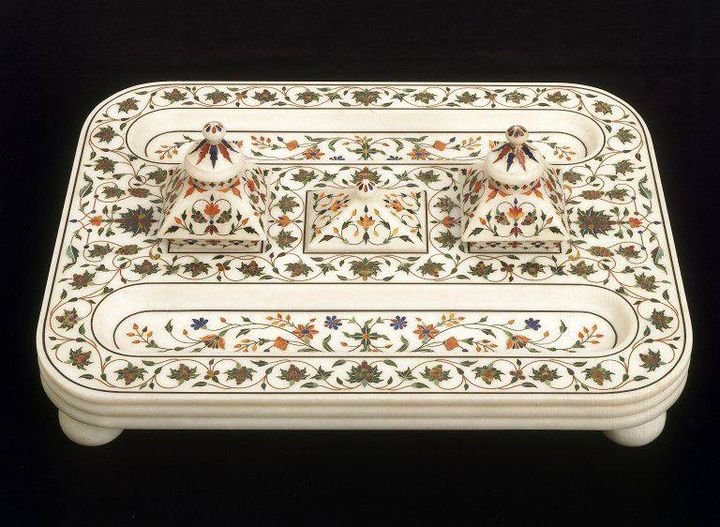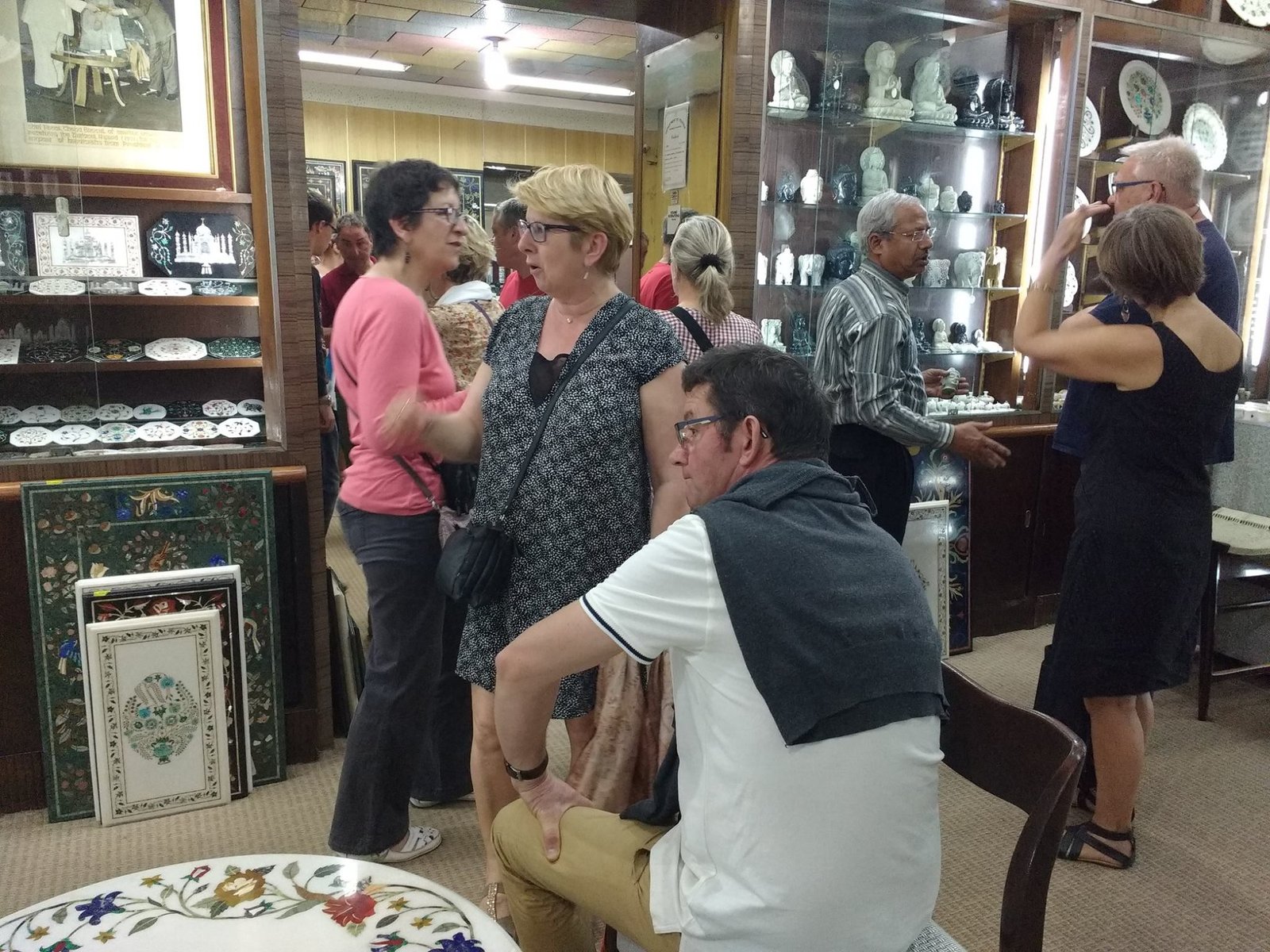World Famous Marble inlay Subhash Emporium Shopping in Agra
“MANUFACTURER AND EXPORTER OF INLAY TABLE-TOPS, BOXES, VASES, COASTERS, PLATES AND MARBLE HANDICRAFTS”
In earlier times, a young apprentice (Shagird) would spend considerable time under a master (Ustad) to learn various aspects of Pachhikari (inlay of gems stones on marble) artwork. Which resulted in exceptional workmanship even at the smallest souvenir shops.
The following inkwell (ca.1850) from the Victoria & Albert Museum, is one such example picked up by a visiting tourist, from one of the shops in Agra. This piece conforms to the most stringent standards of traditional Pachhikari artwork.
“HOWEVER IT REACHED ITS PINNACLE ONLY UNDER EMPEROR SHAH JEHAN, WHO WAS AN ARDENT PATRON OF ARTS AND ARCHITECTURE ESPECIALLY IN WHITE MARBLE. IN INDIA THIS ART CAME TO BE KNOWN AS “PARCHIN KARI” A PERSIAN TERM FOR HARD STONE INLAY WORK.”
Brief History of Founder
Mr. Phool Chand Bansal who belonged to the affluent business family “BANSAL” of Agra left his father’s thriving business of commodity trading to follow his dream of resurrecting the rare art of Parchin Kari, which he long cherished from his childhood visits to the Taj Mahal.
THIS SUCCESS WAS ACHIEVED WITH THE GENEROUS SUPPORT OF THE DEVELOPMENT COMMISSION FOR HANDICRAFTS OF GOVERNMENT OF INDIA AND WAS DULY ACKNOWLEDGED WHEN THE PRESIDENT OF THE INDIAN REPUBLIC CONFERRED THREE CONSECUTIVE NATIONAL AWARDS UPON MARBLE EMPORIUM, FROM 1971 TO 1973.
He started the Gallery of Marble Emporium with enormous passion and zeal and soon made it a haven for the greatest surviving master artists of “Parchin Kari” who had either abandoned this noble tradition to pursue popular professions of their times or were living in abject poverty because of lack of appreciation for this art.



